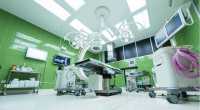
07 May Genetically Fast-Changing Superbugs at Hospitals Require More Stringent Cleaning Methods
 The number of deaths caused by resistant bacteria is expected to reach 10 million by 2025, according to the Centers of Disease Control and Prevention. A highly resistant bacteria found in hospitals – Klebsiella pneumoniae – is now a big global threat, according to a recent (April, 2019) study published by researchers from University College London. Researchers have issued a warning that more stringent cleaning of infectious wards and new air disinfection protocols are key to battling the bug. This is because this bacteria possesses the ability to change genetically at an alarming rate, adapting and essentially nullifying the effect of all current antibiotics.
The number of deaths caused by resistant bacteria is expected to reach 10 million by 2025, according to the Centers of Disease Control and Prevention. A highly resistant bacteria found in hospitals – Klebsiella pneumoniae – is now a big global threat, according to a recent (April, 2019) study published by researchers from University College London. Researchers have issued a warning that more stringent cleaning of infectious wards and new air disinfection protocols are key to battling the bug. This is because this bacteria possesses the ability to change genetically at an alarming rate, adapting and essentially nullifying the effect of all current antibiotics.
The Nature of the Study
Researchers genetically tested 100 different strains of the above-mentioned bacteria from various sources – including patients with active infections, and those who carried the bacteria but were asymptomatic. The hospital wards themselves also contained strains of the bacteria. Testing indicated that the bacteria was highly resistant to various different types of antibiotic, including those used in highly serious situations to treat highly resistant bacteria. The researchers noted that the bacteria circulated quickly from patient to patient, but also across the ward through some medical devices, bed rails, etc. One important finding was that bacteria had stayed present for at least a year prior to the study, suggesting that the initial patient who had the infection was not involved in much later transmissions to other patients. Rather, infection via surfaces was the problem.
Strict Cleaning Protocols Recommended
In the study, researchers recommended improved cleaning of infected wards. According to Penn Jersey, who specialize in hospital cleaning, “Poor hygiene in any medical environment allows disease and infection to spread. Hospital superbugs have developed due to unhygienic and unclean medical environments.” In other words, eliminating superbugs via thorough cleaning and decontamination of high risk wards is key to stopping superbugs from developing into highly resistant strains.
The Importance of High-Level Air Disinfection Systems
Hospitals should be fitted with top-level air disinfection systems to reduce bacterial contamination of surfaces. Newer automated technologies include mobile devices that emit UV-C light, pulsed-xenon UV light systems, and the use of narrow spectrum light. So-called ‘no touch’ systems are an important way to reduce colonization and infections. Research is also currently being carried out into self-disinfecting surfaces, the use of specific cloths for cleaning, and light-activated photosensitizers that can kill bacteria.
Work on Synthesized Antibiotic Underway
Scientists from the University of Lincoln in the UK have successfully developed a new medication that has been used in lab studies to treat infection from highly resistant bacteria. The medication is considered a major breakthrough, because it is capable of killing superbugs. The drug, called teixobactin, is able to eliminate bugs such as MRSA.
Although a significant amount of research needs to be placed into the development of teixobactin as a medication fit for human use, researchers predict that in six to 10 years, the drug will be ready. Of course, owing to the rapid abilities of bacteria to adapt and change, improved cleaning and air filtering methods also need to be developed. What is evident is that superbugs need to be approached from a multifaceted perspective to bring down the significant death toll predicted for the upcoming years.
Last Updated on May 7, 2019 by Marie Benz MD FAAD
